
Caen: The Gem of Normandy
Discover Caen: A city where history meets modern vibrancy. From medieval abbeys to bustling markets, explore the rich heritage and vibrant culture of Normandy's hidden gem.
Caen, a historic city in Normandy, France, is a treasure trove of medieval architecture, rich history, and vibrant culture. Known for its significant role in the Norman conquest and World War II, Caen offers tourists a unique blend of past and present. Explore the stunning Abbaye aux Hommes and Abbaye aux Dames, grand abbeys founded by William the Conqueror and his wife, Matilda. Their impressive Romanesque architecture and serene gardens provide a glimpse into the city's medieval past. Just a short walk away, the imposing Château de Caen, one of the largest medieval fortresses in Western Europe, stands as a testament to the city's strategic importance. Caen is not just about history. Its bustling city center is filled with charming cafes, lively markets, and unique boutiques. Stroll along Rue Saint-Pierre and discover local delicacies, or visit the lively Place Saint-Sauveur for a taste of the city's vibrant atmosphere. The Memorial de Caen, a museum dedicated to peace and conflict, offers thought-provoking exhibits that provide deep insights into World War II and the Battle of Normandy. Nature lovers will appreciate the city's green spaces, including the Jardin des Plantes and the nearby Orne River, perfect for a leisurely boat ride or a peaceful walk. With its rich heritage, welcoming locals, and picturesque landscapes, Caen is a must-visit destination for anyone exploring Normandy.
Local tips in Caen
- Visit the Musée de Normandie inside the Château de Caen to learn about the region's history.
- Try the local specialty, 'Teurgoule', a delicious rice pudding flavored with cinnamon.
- Rent a bike to explore the city and its surroundings; Caen is very bike-friendly.
- Check the schedule for guided tours at the Memorial de Caen for a deeper understanding of WWII history.
- Visit the local markets on Sundays for fresh produce and unique local crafts.
- Take a day trip to the nearby D-Day landing beaches for a poignant historical experience.
- Book tickets in advance for popular attractions during peak tourist season to avoid long lines.
Caen: The Gem of Normandy
Caen, a historic city in Normandy, France, is a treasure trove of medieval architecture, rich history, and vibrant culture. Known for its significant role in the Norman conquest and World War II, Caen offers tourists a unique blend of past and present. Explore the stunning Abbaye aux Hommes and Abbaye aux Dames, grand abbeys founded by William the Conqueror and his wife, Matilda. Their impressive Romanesque architecture and serene gardens provide a glimpse into the city's medieval past. Just a short walk away, the imposing Château de Caen, one of the largest medieval fortresses in Western Europe, stands as a testament to the city's strategic importance. Caen is not just about history. Its bustling city center is filled with charming cafes, lively markets, and unique boutiques. Stroll along Rue Saint-Pierre and discover local delicacies, or visit the lively Place Saint-Sauveur for a taste of the city's vibrant atmosphere. The Memorial de Caen, a museum dedicated to peace and conflict, offers thought-provoking exhibits that provide deep insights into World War II and the Battle of Normandy. Nature lovers will appreciate the city's green spaces, including the Jardin des Plantes and the nearby Orne River, perfect for a leisurely boat ride or a peaceful walk. With its rich heritage, welcoming locals, and picturesque landscapes, Caen is a must-visit destination for anyone exploring Normandy.
When is the best time to go to Caen?
Iconic landmarks you can’t miss
Mémorial de Caen
Explore the profound history of World War II at Mémorial de Caen, a touching tribute to peace and remembrance in the heart of Normandy.

Caen Castle
Discover the enchanting Caen Castle, a historical gem in Normandy, blending stunning architecture with rich cultural heritage.
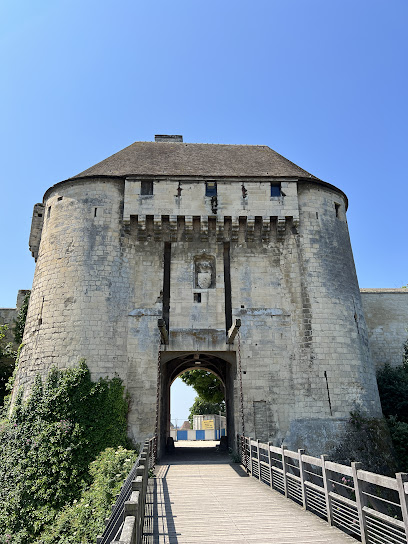
Colline aux Oiseaux
Experience the beauty of nature at Colline aux Oiseaux, a serene city park in Caen, perfect for relaxation, family outings, and cultural events.

L'Abbaye-aux-Hommes
Discover the historical and architectural beauty of L'Abbaye-aux-Hommes in Caen, a serene landmark steeped in history and cultural significance.

Caen Botanical Garden
Discover the enchanting Caen Botanical Garden, a lush sanctuary of diverse plants and serene landscapes in the heart of Normandy, France.

The Abbey of Sainte-Trinité
Explore the stunning Abbey of Sainte-Trinité in Caen, a historical monastery with breathtaking architecture and serene gardens, perfect for a peaceful retreat.

Parc Michel d'Ornano
Discover the serene beauty and cultural treasures of Parc Michel d'Ornano, a must-visit city park in Caen that captivates every visitor.

St Peter's Catholic Church
Explore the stunning Gothic architecture and serene ambiance of St. Peter's Catholic Church, a must-visit spiritual and cultural landmark in Caen.

Museum of Fine Arts, Caen
Explore the Museum of Fine Arts in Caen, where centuries of artistic heritage await your discovery in a stunning cultural setting.

Musée de Normandie
Explore the captivating history and culture of Normandy at the Musée de Normandie in the historic Château of Caen, a must-visit for every traveler.
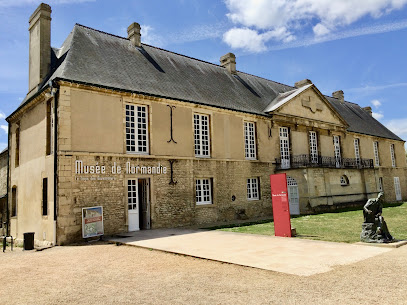
Caen Tourist Office
Explore Caen's historical treasures and vibrant culture from the central hub of the Caen Tourist Office - your guide to unforgettable experiences.

Old St. Stephen's Church
Explore the historical beauty of Old St. Stephen's Church in Caen, a stunning example of Gothic architecture and a serene retreat for visitors.

Maison des Quatrans
Explore the enchanting Maison des Quatrans in Caen, a historic landmark that showcases exquisite architecture and rich heritage.

Porte des Champs
Discover the rich history and stunning architecture of the Porte des Champs, a must-see historical landmark in Caen, France.

Manoir des Gens d'armes
Explore the enchanting Manoir des Gens d'armes, a historic landmark in Caen that reveals the rich cultural tapestry of Normandy's past.

Unmissable attractions to see
Mémorial de Caen
Discover the profound history of World War II at Mémorial de Caen, an essential destination for understanding the impact of conflict on our world.

Overlord Museum
Explore the legacy of WWII at Overlord Museum in Colleville-sur-Mer, where history comes alive through immersive exhibits and poignant artifacts.

D-Day Museum
Explore the D-Day Museum in Arromanches-les-Bains for an unforgettable journey into the history of World War II and the Normandy landings.

Bayeux Tapestry Museum
Explore the Bayeux Tapestry Museum, home to the stunning 11th-century tapestry that illustrates the Norman Conquest of England, a true gem of medieval art.

Caen Castle
Explore the historical grandeur of Caen Castle, a UNESCO-listed fortress that embodies the rich heritage of Normandy's past.

Longues-sur-Mer battery
Explore the Longues-sur-Mer Battery, a historical landmark revealing the military history of Normandy with stunning coastal views.
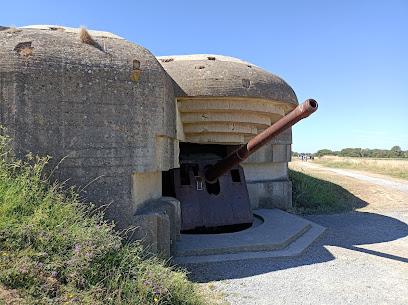
Memorial Pegasus
Discover the bravery of D-Day at Memorial Pegasus, a war museum honoring the airborne operations and the historic Pegasus Bridge.

Arromanches 360° Circular Cinema
Discover the immersive Arromanches 360° Circular Cinema, where history comes alive through captivating films about D-Day and the Normandy landings.

Casino Barrière Deauville
Experience luxury and excitement at Casino Barrière Deauville, where gaming, dining, and entertainment unite on the beautiful Normandy coast.

Cathédrale Notre-Dame de Bayeux
Explore the beauty and history of Bayeux Cathedral, a stunning Gothic masterpiece in the heart of Normandy, rich with stories and artistry.

Juno Beach Center
Discover the legacy of the Canadian military at Juno Beach Center, a poignant tribute to D-Day and the sacrifices of World War II.

Colline aux Oiseaux
Discover the enchanting Colline aux Oiseaux in Caen, a lush urban park blending natural beauty with artistic charm and panoramic views.

Museum and the Merville Battery site
Discover the poignant history of WWII at the Merville Battery Museum, where bravery and strategy shaped the future of Normandy's shores.

Memorial Museum of Omaha Beach
Explore the Memorial Museum of Omaha Beach in Saint-Laurent-sur-Mer, where history comes to life through immersive exhibits honoring D-Day and its heroes.

Parc Festyland
Experience the magic of Parc Festyland, a charming amusement park in Bretteville-sur-Odon, perfect for family fun and unforgettable adventures.

Essential places to dine
Les Fils à Maman Caen
Discover the charm of French cuisine at Les Fils à Maman Caen – where homestyle cooking meets modern flair in a delightful dining experience.

Bœuf & Cow
Savor exquisite steaks and authentic French cuisine at Bœuf & Cow - a must-visit steakhouse in Caen.
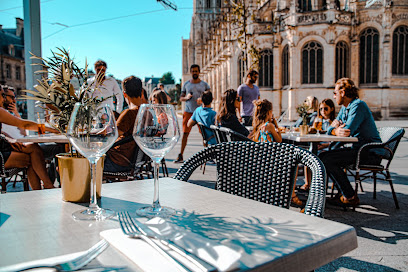
Le Bistronome
Experience the essence of French cuisine at Le Bistronome in Caen - where tradition meets modern culinary artistry.

Le Sans Gêne
Experience exceptional barbecue dining at Le Sans Gêne in Caen – where every bite is a celebration of flavor.

El Olivo
Experience exquisite French cuisine at El Olivo in Caen - where tradition meets innovation in every delicious bite.

Restaurant L'Avenue 21
Experience authentic French cuisine and gourmet hamburgers at Restaurant L'Avenue 21 in beautiful Caen.

Le Bistrot Basque
Experience authentic French cuisine at Le Bistrot Basque in Caen - where tradition meets taste along the beautiful quay.

Dollys
Discover Dollys in Caen - A delightful burger restaurant offering gourmet flavors and a vibrant atmosphere for food lovers.
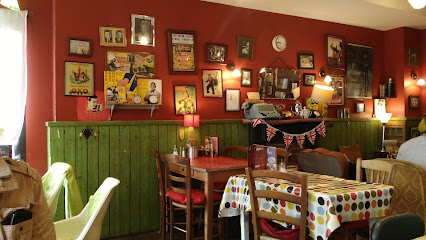
IL RISTORANTE - le restaurant italien de Caen
Experience authentic Italian cuisine at IL RISTORANTE in Caen - from delightful pasta dishes to exquisite wines.
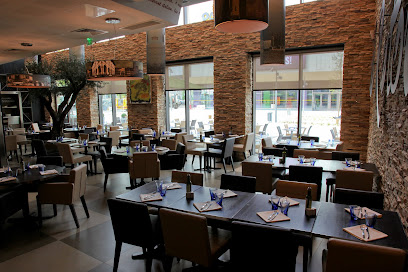
Les Relais d’Alsace
Discover authentic French cuisine at Les Relais d’Alsace in Caen – where tradition meets taste in a delightful brasserie setting.

Monsieur Louis
Experience exquisite French and Mediterranean cuisine at Monsieur Louis in Caen, where every meal is crafted with passion and freshness.

Villa Eugène
Experience the epitome of French dining at Villa Eugène in Caen – where Mediterranean flavors meet elegance.

La Planche A
Discover authentic French cuisine at La Planche A in Caen, where fresh ingredients meet culinary passion for an unforgettable dining experience.

Crêperie la Galettoire
Experience authentic Breton cuisine at Crêperie la Galettoire in Caen – where delightful crêpes meet warm hospitality.

Maison La Poterne
Experience the best of French and Mediterranean cuisine at Maison La Poterne in Caen, where culinary artistry meets delightful ambiance.

Markets, malls and hidden boutiques
Les Rives de l'Orne
Discover Les Rives de l'Orne, a premier shopping mall in Caen offering diverse shopping, exquisite dining, and vibrant entertainment options along the beautiful Orne River.

Galeries Lafayette Caen
Experience the elegance of shopping at Galeries Lafayette Caen, featuring a wide range of fashion, beauty, and lifestyle products in a stylish setting.

Printemps
Explore the elegance of Printemps in Caen, a premier department store offering fashion, beauty, and lifestyle products in a vibrant shopping atmosphere.

Nature & Découvertes
Discover nature-inspired gifts and eco-friendly products at Nature & Découvertes in Caen, perfect for unique souvenirs and sustainable shopping.

Pull et bear
Explore the latest urban fashion trends at Pull & Bear, the go-to clothing store in Caen for stylish men and women.

Fripe à la mode de Caen
Explore unique vintage fashion at Fripe à la mode de Caen, where every piece adds a story to your wardrobe in the heart of Caen, France.

HEMA
Explore HEMA in Caen for a unique shopping experience with an extensive selection of gifts, clothing, and party supplies perfect for every occasion.

Le Comptoir Irlandais
Explore Le Comptoir Irlandais in Caen for an authentic Irish shopping experience, featuring clothing, gourmet foods, and unique gifts.

Eleene
Explore Eleene in Caen - a delightful gift shop, café, and Korean restaurant offering unique souvenirs and a cozy atmosphere.

PIMKIE
Discover the latest women's fashion at PIMKIE in Caen, where trendy clothing meets chic accessories in a stylish boutique atmosphere.

It Shop
Explore the latest trends and timeless pieces at It Shop, a premier clothing destination in Caen for stylish men and women.

Boutique Aigle Caen
Explore Boutique Aigle Caen for stylish outdoor clothing and accessories, perfect for adventurers of all ages in the heart of Caen.

Le Stor'age
Explore contemporary French fashion at Le Stor'age in Caen, featuring stylish selections for men, women, and footwear.

Elle n'en fée qu'à sa tête
Explore the enchanting world of hats at 'Elle n'en fée qu'à sa tête' in Caen, where unique styles meet French elegance.
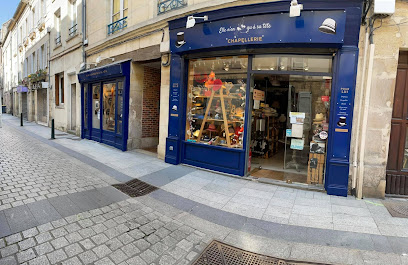
Deux Heures Seize - Concept store
Discover the charm of Deux Heures Seize, a concept store in Caen offering unique cosmetics, fashion accessories, and women's clothing for all styles.
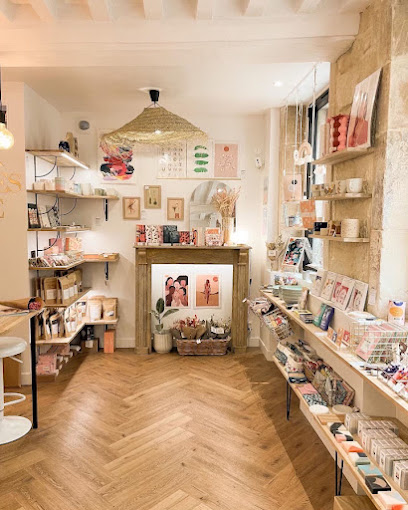
Essential bars & hidden hideouts
L'Hydropathe
Discover L'Hydropathe in Caen, where exquisite wines meet delightful tapas in a cozy atmosphere that embodies French wine culture.

Le Trappist
Discover the vibrant atmosphere of Le Trappist, a premier beer hall in Caen, offering a delightful selection of craft brews and French hospitality.

Moon & Sons
Discover the charm of Moon & Sons, a premier pub in Caen offering a diverse drink selection and delicious desserts in a cozy atmosphere.

Delirium Café
Experience the vibrant nightlife at Delirium Café in Caen, where exquisite drinks and a lively atmosphere await you.
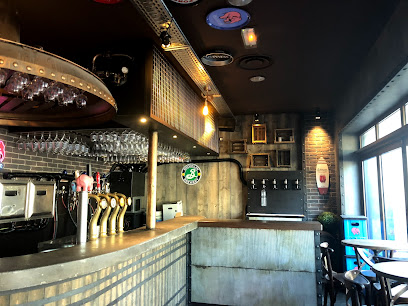
Vertigo
Discover the pulse of Caen nightlife at Vertigo, a lively bar offering an extensive drink menu in a cozy and inviting atmosphere.

Balthazar
Discover the vibrant flavors of tapas and cocktails at Balthazar, Caen's premier culinary destination for an unforgettable dining experience.

Au Chef Raide
Discover Au Chef Raide, a charming bar in Caen offering a delightful selection of drinks and a cozy atmosphere for a memorable evening.

Kokomo
Experience the vibrant nightlife of Caen at Kokomo, a lively bar known for its welcoming atmosphere and diverse drink selection, perfect for socializing.

Le Boudoir
Discover the charming atmosphere of Le Boudoir in Caen, where exquisite cocktails and lively music create the perfect night out.

Jungle Bar Caen
Discover the vibrant nightlife of Caen at Jungle Bar, where cocktails, tapas, and sports create the ultimate social experience.

Speakeasy
Experience the charm of Speakeasy in Caen, where vintage decor meets expertly crafted cocktails in a lively, inviting atmosphere.

La Garsouille
Discover the lively ambiance of La Garsouille, a top bar in Caen offering a vibrant atmosphere and a diverse drink selection for an unforgettable night out.

Broc' Café
Discover the flavors of Caen at Broc' Café, where café charm meets bar vibes in a cozy setting perfect for relaxation.
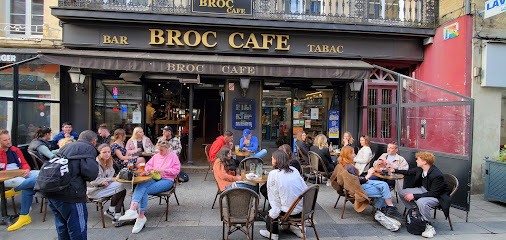
Gini's Bar
Discover the vibrant flavors of Spanish cuisine at Gini's Bar in Caen, the perfect spot for tapas and good times.

El Mojito
Experience the vibrant nightlife at El Mojito, a top lounge and cocktail bar in Caen, perfect for relaxing and socializing.

Local Phrases
-
- HelloBonjour
[bohn-zhoor] - GoodbyeAu revoir
[oh ruh-vwahr] - YesOui
[wee] - NoNon
[nohn] - Please/You're welcomeS'il vous plaît / De rien
[seel voo pleh / duh ryen] - Thank youMerci
[mehr-see] - Excuse me/SorryExcusez-moi / Désolé
[ehk-skew-zay mwah / day-zoh-lay] - How are you?Comment ça va ?
[koh-mohn sah vah] - Fine. And you?Bien. Et toi ?
[byan. ay twah] - Do you speak English?Parlez-vous anglais ?
[par-lay voo ahn-glay] - I don't understandJe ne comprends pas
[zhuh nuh kohm-prahnd pah]
- HelloBonjour
-
- I'd like to see the menu, pleaseJe voudrais voir la carte, s'il vous plaît
[zhuh voo-dray vwahr lah kart, seel voo pleh] - I don't eat meatJe ne mange pas de viande
[zhuh nuh mahnzh pah duh vyand] - Cheers!Santé !
[sahn-tay] - I would like to pay, pleaseJe voudrais payer, s'il vous plaît
[zhuh voo-dray pay-ay, seel voo pleh]
- I'd like to see the menu, pleaseJe voudrais voir la carte, s'il vous plaît
-
- Help!Au secours !
[oh seh-koor] - Go away!Allez-vous en !
[ah-lay voo zawn] - Call the Police!Appelez la police !
[ah-peh-lay lah poh-leece] - Call a doctor!Appelez un médecin !
[ah-peh-lay uh meh-deh-sahn] - I'm lostJe suis perdu
[zhuh swee pair-doo] - I'm illJe suis malade
[zhuh swee mah-lahd]
- Help!Au secours !
-
- I'd like to buy...Je voudrais acheter...
[zhuh voo-dray zah-shey...] - I'm just lookingJe regarde juste
[zhuh ruh-gard zhew-st] - How much is it?Combien ça coûte ?
[kohm-byen sah koot] - That's too expensiveC'est trop cher
[say troh shair] - Can you lower the price?Pouvez-vous baisser le prix ?
[poo-vey voo beh-say luh pree]
- I'd like to buy...Je voudrais acheter...
-
- What time is it?Quelle heure est-il ?
[kell uhr eh-teel] - It's one o'clockIl est une heure
[eel eh oon uhr] - Half past (10)Dix heures et demie
[dees uhr ay duh-mee] - MorningMatin
[mah-tahn] - AfternoonAprès-midi
[ah-pray mee-dee] - EveningSoir
[swahr] - YesterdayHier
[yehr] - TodayAujourd'hui
[oh-zhoor dwee] - TomorrowDemain
[duh-man] - 1Un
[uhn] - 2Deux
[duh] - 3Trois
[twah] - 4Quatre
[kahr-truh] - 5Cinq
[sank] - 6Six
[sees] - 7Sept
[sept] - 8Huit
[weet] - 9Neuf
[nuhf] - 10Dix
[dees]
- What time is it?Quelle heure est-il ?
-
- Where's a/the...?Où est...?
[oo eh...] - What's the address?Quelle est l'adresse ?
[kell eh lah-dress] - Can you show me (on the map)?Pouvez-vous me montrer (sur la carte) ?
[poo-vey voo muh mohn-tray (soor lah kart)] - When's the next (bus)?Quand est le prochain (bus) ?
[kahn eh luh pro-shahn (boos)] - A ticket (to ....)Un billet (pour ...)
[uhn bee-yay (poor ...)]
- Where's a/the...?Où est...?
History of Caen
-
Caen, located in the Normandy region of France, was founded in the 11th century by William the Conqueror. This period marked the beginning of Caen's prominence, as it became an important ducal city under William's rule. The town quickly grew, benefiting from its strategic location near the Orne River and the English Channel.
-
William the Conqueror's connection to Caen is deeply entwined with the city's history. In 1066, William launched his successful conquest of England from Normandy, and Caen played a significant role as a logistical base. The construction of the imposing Château de Caen and the Abbey of Saint-Étienne, also known as the Abbaye aux Hommes, are testaments to his legacy.
-
During the medieval period, Caen flourished economically and culturally. The city became a center for trade and education, with the establishment of the University of Caen in 1432. The medieval architecture, including the Abbaye aux Dames and the Church of Saint-Pierre, reflects the city's prosperity during this era.
-
Caen experienced significant turmoil during the Hundred Years' War between France and England. The city was captured by the English in 1346 and remained under their control for several decades. It was eventually recaptured by the French in 1450. The war had a lasting impact on Caen, leading to periods of reconstruction and revitalization.
-
The Renaissance brought cultural and architectural advancements to Caen. However, the city was also affected by the Wars of Religion in the 16th century, which saw conflicts between Catholics and Protestants. Despite the turmoil, Caen continued to grow, and many Renaissance-era buildings still stand today, showcasing the city's resilience and artistic heritage.
-
Caen experienced a period of relative stability and growth during the 17th and 18th centuries. The city expanded, with new districts and public buildings being constructed. Notable landmarks from this period include the Hôtel d'Escoville and the Church of Saint-Jean. This era also saw the enhancement of Caen's educational institutions, further cementing its role as an intellectual hub.
-
World War II had a profound impact on Caen. The city was a key objective during the D-Day landings in June 1944, and it became a focal point of the Battle of Normandy. Caen suffered extensive damage during the battle, with much of the city being destroyed. The post-war period saw significant reconstruction efforts, transforming Caen into a symbol of resilience and rebirth.
-
Today, Caen is a vibrant city that balances its rich historical heritage with modern cultural offerings. The Mémorial de Caen, a museum and war memorial, serves as a poignant reminder of the city's wartime experiences and dedication to peace. Caen's thriving arts scene, historic sites, and educational institutions make it a dynamic and engaging destination for visitors.
Caen Essentials
-
Caen is accessible via several modes of transportation. The nearest international airport is Caen-Carpiquet Airport (CFR), located about 6 km (4 miles) from the city center. You can also take a train from Paris to Caen, which typically takes around 2 hours. For those driving, Caen is well-connected by major highways such as the A13 from Paris. Buses and coaches also operate regularly from various French cities to Caen.
-
Within Caen, public transportation is efficient and includes buses and trams operated by Twisto. Tickets can be purchased at kiosks and on-board. Taxis are available, and ride-sharing services like Uber operate in the area. Renting a bike is also a popular way to explore the city, with several rental shops available. For those who prefer walking, many of Caen's attractions are within walking distance in the city center.
-
The currency used in Caen is the Euro (EUR). Credit and debit cards are widely accepted, but it is advisable to carry some cash for small purchases, especially in local markets. ATMs are readily available throughout the city. Contactless payment methods are also increasingly popular.
-
Caen is generally a safe city for tourists, but like any city, it is advisable to take standard precautions. Avoid walking alone at night in unfamiliar areas and keep an eye on your belongings in crowded places. Be particularly cautious in the areas around the train station and some parts of the city center late at night, as these can be hotspots for petty crime.
-
In case of emergency, dial 112 for immediate assistance, which is the EU-wide emergency number. For local police, dial 17. For medical emergencies, dial 15. Caen has several hospitals and clinics that can provide medical care. Pharmacies are plentiful and can offer over-the-counter medications for minor health issues. It is recommended to have travel insurance that covers medical emergencies.
-
Fashion: Do dress smart-casual when dining out or visiting cultural sites. Avoid overly casual attire in formal settings. Religion: Do show respect when visiting religious sites like the Abbaye aux Hommes and Abbaye aux Dames. Dressing modestly is appreciated. Public Transport: Do validate your ticket when boarding buses and trams. Don't eat or drink on public transport. Greetings: Do greet with a 'Bonjour' and a handshake. Avoid overly familiar gestures with strangers. Eating & Drinking: Do try the local cuisine, including camembert cheese and cider. Don’t rush through meals; dining is a leisurely affair in France.
-
To experience Caen like a local, visit the weekly markets at Place Saint-Sauveur for fresh produce and local specialties. Take a stroll along the Orne River and enjoy a picnic at Jardin des Plantes. Engage with locals at cafes and bars; they are often friendly and willing to share stories about the city. Don't miss the opportunity to explore the historical sites like the Caen Castle and the Memorial Museum for an in-depth understanding of the city's rich history.
Trending Landmark in Caen
-
Mémorial de Caen
-
Caen Castle
-
Colline aux Oiseaux
-
L'Abbaye-aux-Hommes
-
Caen Botanical Garden
-
The Abbey of Sainte-Trinité
-
Parc Michel d'Ornano
-
St Peter's Catholic Church
-
Museum of Fine Arts, Caen
-
Musée de Normandie
-
Caen Tourist Office
-
Old St. Stephen's Church
-
Maison des Quatrans
-
Porte des Champs
-
Manoir des Gens d'armes
Nearby Cities to Caen
-
Things To Do in Rouen
-
Things To Do in Gorey
-
Things To Do in St. Clement
-
Things To Do in Trinity
-
Things To Do in St. Helier
-
Things To Do in St. Lawrence
-
Things To Do in St. Aubin
-
Things To Do in St. Peter
-
Things To Do in St. Brelade
-
Things To Do in St. Ouen
-
Things To Do in Saint-Malo
-
Things To Do in St. Anne
-
Things To Do in Rennes
-
Things To Do in St. Sampson
-
Things To Do in St. Peter Port










